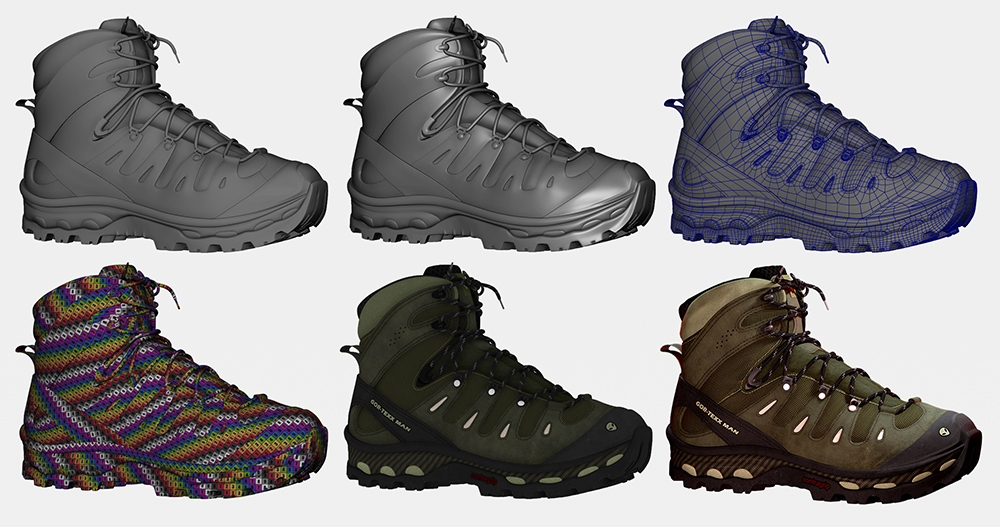Texturing
What is texturing and why do I need it?
The Texture Artist’s main duty is to create photorealistic textures for mapping onto 3d models used in video games, films, television, music videos, or commercials—like wrapping a gift box in patterned paper. These textures will often be created from scratch, but may also be created from existing materials. Familiarity with the requisite software is required, as well as familiarity with the process of UV Mapping. The process of UV Mapping is often the 3d Modeler’s job but in some instances or productions the Texture Artist may be required to fulfill the task.
To create the appropriate finishes, a Texture Artist may scan photographs and then digitally apply the textures to objects and environments previously created by other members of the effects team, or they may create custom textures that go far beyond what appears in nature. As members of the visual effects team, texture artists must maintain a high level of photorealism in whatever surfaces they choose so as to enhance the 3-D environment and fit the requirements of the model pipeline and shading setup.
Texturing gives a stale or unpainted 3d object the final desired look you see on the screen after the model and it’s corresponding texture files have been combined and rendered within the productions software. Often, the Texture Artist will also be proficient in Lighting and Rendering to help the production achieve it’s desired goal whether it be for a children’s cartoon, or for an international Hollywood blockbuster.
A good texture can give more detail to a 3d modeler’s digital sculpt displacement or normal map. Such increases in resolution in the texture can decrease render times within a production.
Can one 3d Artist perform all the task of 3d modeling, digital sculpting, rigging, and texturing?
Absolutely but it is rare. Just one of these skillsets takes years to master. Most large scale productions spread these task out to multiple artist but a smaller and relatively cheaper production may opt to hire one individual to bring a 3d asset from the conceptualization stage all the way to the post production phase of lighting and rendering. The benefit of the later is you have one individual performing all the requirements and modifications of the 3d subject, thus helping any hang-ups associated with multi-department communications, individual production standards, and human ego.


Recent Comments